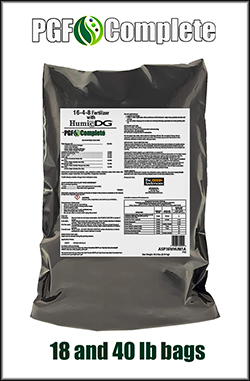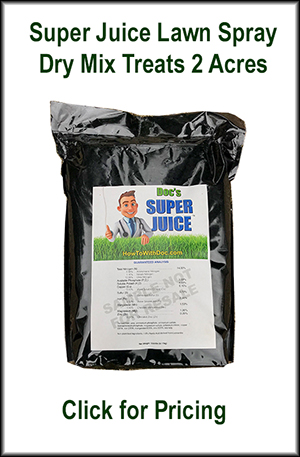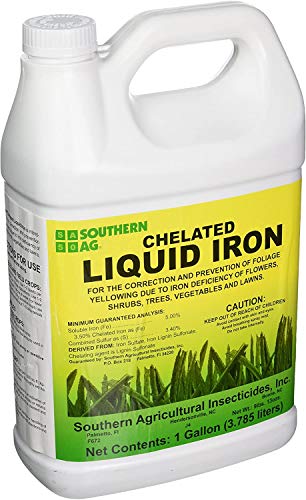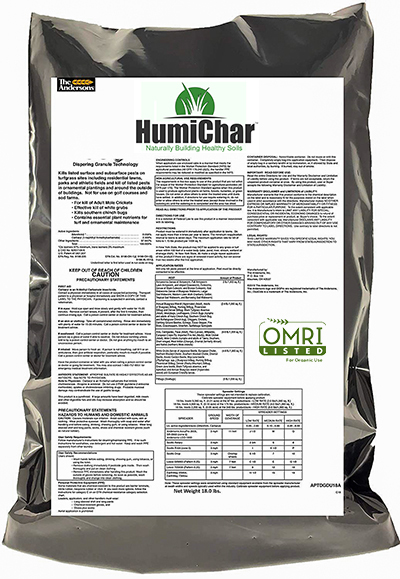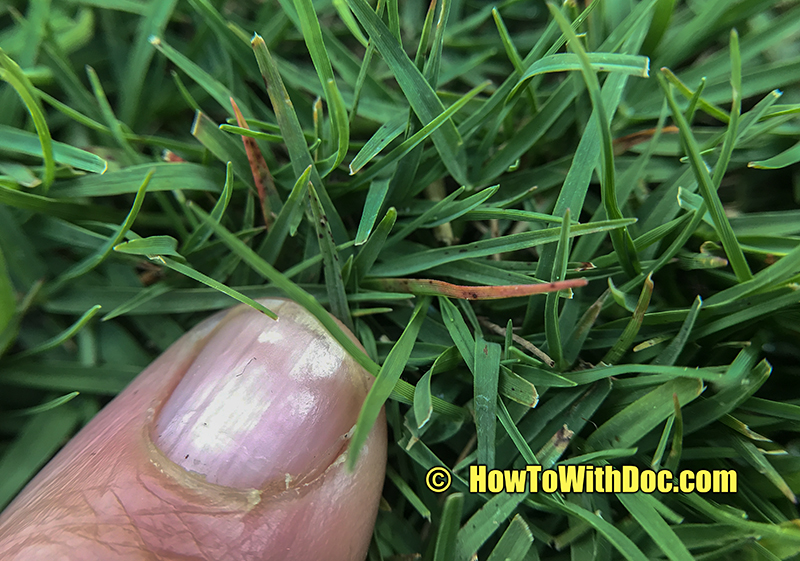Red Tips and Yellow Blades in Lawn
Discoloration of grass blades is fairly common and there are two main color issues to look for. In this video Doc shows you some red tips and how he deals with them.
Video of Lawn Color Issues
Red Tips on Grass
First, red tips on the grass are caused by two main factors. Cold snaps causing stress damage is the main cause, but also low phosphorus levels can do the same. I strongly suggest a soil test if no cold weather has been around for weeks. A soil test will reveal the needed fix.
Yellow Blades of Grass
Yellow blades are caused by chlorosis. Iron chlorosis results when green chlorophyll in leaf tissue fails to develop. Although iron is not part of the chlorophyll molecule, it is one of the nutrients essential for chlorophyll synthesis. Iron chlorosis first develops in new growth and appears as yellowish-green leaves, usually as an interveinal yellowing, giving the leaf a striped appearance. As the condition worsens leaves appear yellow to almost white. In severe cases of iron chlorosis, loss of turf grass and other plants occur in irregular patterns.
Solutions
Red Tips – They will go away with warmer temps if it is cold stress. Or… get a soil test and if low on phosphorous see the correcting fertilizer below.
Yellow Blades – Give your lawn time to dry out in-between waterings. Aeration may help. Spray lawn with Super Juice and add extra iron. If you’re not using PGF Complete fertilizer, switch now.
PGF Complete lawn fertilizer
Sold in 18 and 40 lb bags. Great for all lawns warm and cool season.
PGF Complete is the PERFECT fertilizer for established spring lawns, new lawns, and new turf.
Super Juice Supplement Spray
High Phos Fertilizer – Use only Once
Liquid Iron
Soil Probe
Soil Test Bags
HUMICHAR
NOTE: It may show currently unavailable, keep checking back.
It sells out VERY FAST
Iron chlorosis presents a significant problem to crop production in the southwestern United States. It is most prevalent in high pH, calcareous soils. In such soils the growth and appearance of many plants, including turfgrasses, are impaired by iron deficiencies.
Iron chlorosis results when green chlorophyll in leaf tissue fails to develop. Although iron is not part of the chlorophyll molecule, it is one of the nutrients essential for chlorophyll synthesis. Iron chlorosis first develops in new growth and appears as yellowish-green leaves, usually as an interveinal yellowing, giving the leaf a striped appearance. As the condition worsens leaves appear yellow to almost white. In severe cases of iron chlorosis, loss of turfgrass and other plants occur in irregular patterns.
Iron chlorosis is attributed to reduced availability of iron in calcareous soils and may also be associated with high levels of bicarbonate and phosphate in plant tissue.


